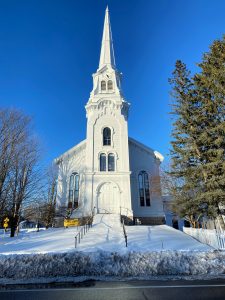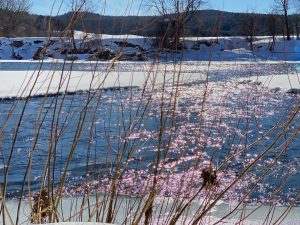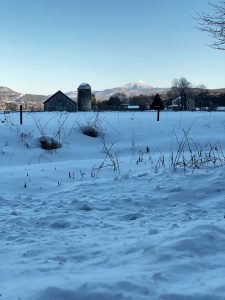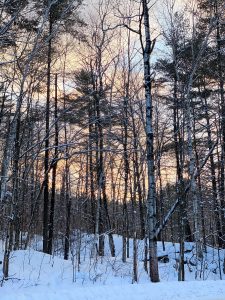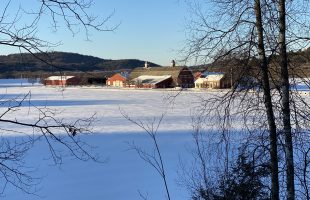
I have come here for six weeks to help my family. Everything looks a little different here in Vermont – different from the coast of Maine, that is. No ocean – a huge difference from 26 Split Rock Cove. But there’s something else here I’m trying to put my finger on. Each time I drive over the Connecticut River into Vermont there’s a calm feeling comes over me as I look out my car window. Maybe it’s the lull of verdant rolling hills that gain height into rolling mountains, and bump back down to the Champlain Valley. Or the red barns and silos that sit quietly in the landscape, the small villages with their white-spired churches tucked down into the valleys. It feels so homey!
Since arriving I have done some serious looking, research, and thinking about why Vermont is so beautiful. Vermont is the second lease populated state (after Wyoming), and has the highest cow to people ration in the United States! Barns and silos, requirements for these bucolic farms, are ubiquitous. I’ve also discovered that Maine has invested in its charming, white-spired church villages through the Downtown & Village Center Tax Credit Program, promoting vital, thriving downtowns and economic development for its rural citizens. The last 30 thirty years of investment has paid off, increasing small businesses in Maine villages, including restaurants, shops, and farmers markets or local natural foodmarkets. Small organic farms exist everywhere in Chittenden County, and many other counties I’m sure, because the valley areas are so fertile and lush. I can drive 20 minutes in any direction and pick up fresh raw milk, eggs and fresh butchered meat. And because the Green Mountains, which are like a spine running north to south in the middle of the state, are not that tall, and have eroded over millions of years, the tree line is quite high, making Vermont a state covered in pine trees. In fact, 77% of Vermont is covered with trees.
The basic layout of Vermont in terms of its mountains and valleys was probably established by about 150 million years ago. Since then, Vermont’s geology has mostly been a story of erosion, which has been hastened in more recent times by glaciers. The foothills are gentle, the landscape is about light and space, the opportunities for viewing it around every curve in the road.
This time, though, I’m here in the dead of winter. Open fields, now snowy blankets, are surrounded by pine forests, and butt up against bigger hills and small mountains. Everywhere I drive these days I see Mt. Mansfield, Vermont’s tallest peak, in the distance, sometimes blue-gray, sometimes pink in the late afternoon.
The returning light of late February, late in the day, illuminating hills is divine. And I mean divine in the religious, or mystical sense. I think that observation is closer to what I’m trying to say. I am content to bask in this mystical light – after the very dark December and January, emotionally, politically, and time of year-wise – and that elusive quality that makes me breathe a sigh of relief whenever I come.


